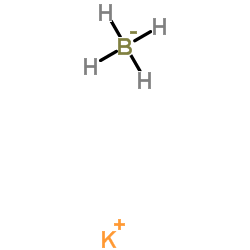Inhibition by aminoacyl-chloromethane protease inhibitors of superoxide anion production by phorbol-ester-stimulated human neutrophils. The labeled target is a membrane protein.
E C Conseiller, D Schott, F Lederer
文献索引:Eur. J. Biochem. 193(2) , 345-50, (1990)
全文:HTML全文
摘要
In a previous paper, we described the kinetic characteristics of the inhibition exerted by the protease inhibitors tosylphenylalanyl and tosyllysyl chloromethanes on superoxide production by human polymorphonuclear leukocytes when stimulated by phorbol esters [E. C. Conseiller & F. Lederer (1989) Eur. J. Biochem. 183, 107-114]. The results suggested the existence of a specific target which was affinity labeled by the inhibitors. The target appeared to be neither a protease, nor intracellular enzymes which can be inhibited in vitro by the chloromethanes (protein kinase C, hexokinase and enzymes of the hexose monophosphate shunt). In the present work, using the cell-free reconstitution assay for superoxide production, we substantiate the hypothesis that the chloromethanes, target is on the plasma membrane. We have radiolabeled the membranes of cells inactivated before or after phorbol ester stimulation, using either [3H]KBH4 reduction after reaction with unlabeled inactivator, or tritiated tosylphenylalanyl chloromethane. In all cases, besides a certain background of non-specific labeling, a radioactive band of Mr 15,000 can be observed upon SDS/PAGE of radiolabeled membranes. We suggest that it is the chemical modification of this protein which is responsible for inactivation of superoxide production. Its identity and its role in the oxidative burst remain to be determined.
相关化合物
| 结构式 | 名称/CAS号 | 分子式 | 全部文献 |
|---|---|---|---|
 |
硼氢化钾
CAS:13762-51-1 |
H4BK |
|
Electrocatalytic reduction of bromate based on Pd nanopartic...
2015-12-01 [Chemosphere 141 , 243-9, (2015)] |
|
Speciation analysis of arsenic in traditional Chinese medici...
2003-06-01 [Anal. Sci. 19(6) , 897-902, (2003)] |
|
[Determination of trace bismuth in traditional Chinese medic...
2005-08-01 [Guang Pu Xue Yu Guang Pu Fen Xi 25(8) , 1355-7, (2005)] |
|
A new sialoglycoprotein from rat seminal vesicle and its ass...
1986-04-29 [Biochem. Biophys. Res. Commun. 136(2) , 753-9, (1986)] |
|
[HG-AFS determination of Se in Trionyx triunguis].
2005-08-01 [Guang Pu Xue Yu Guang Pu Fen Xi 25(8) , 1358-60, (2005)] |